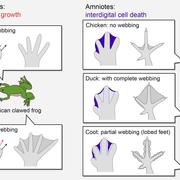
A collaboration between professors at Tokyo Tech and Yamagata University and Prof. Jim Hanken has identified a surprising factor that the amount of oxygen surrounding the embryo could have been crucial for the appearance of interdigital cell death in tetrapods during evolution. The study, published in Developmental Cell, looked to understand the role of environmental oxygen in the evolution of the limbs of tetrapods. Using the coqui frogs, which live in a lab colony in the Museum of Comparative Zoology, the team found their answer: the data revealed that ecological features - where the embryos are and how much oxygen surrounds it - can have a direct effect on the presence of cell death in the limbs during development. EurekAlert
